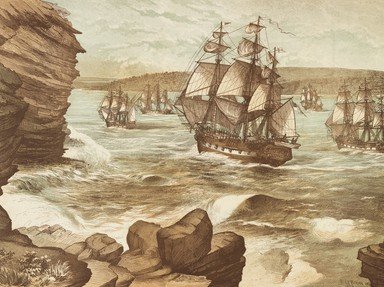Quiz Answer Key and Fun Facts
1. You are a convicted criminal in Britain who has just been notified that you will serve your sentence in the colony of New South Wales. What crime did you most likely commit?
2. Why did the British government decide to send convicted criminals to a British colony about 10,000 miles away?
3. If you were a prisoner sentenced to exile in New South Wales, on what type of ship would you be first placed?
4. As a convict arriving in New South Wales, you might have been placed with a settler to do farm labor. What was this system called?
5. How many women were sent to Australia as convicts?
6. You are a convict who is paid with both small amounts of money and with goods. One of these "goods" causes a lot of problems with the convicts in New South Wales. What is it?
7. Some of the convicts escaped, either into the bush or to the sea. Who made a famous escape from Sydney to Timor, only to be caught again?
8. You are a convict in New South Wales who is being sent to "Hell's Gate", a fearful work prison. Where are you going?
9. What finally put an end to the British government's policy of transporting its convicts to New South Wales?
10. What other historical event does the exile of British prisoners most resemble, according to "The Fatal Shore"?
Source: Author
severnriver
This quiz was reviewed by FunTrivia editor
bloomsby before going online.
Any errors found in FunTrivia content are routinely corrected through our feedback system.

